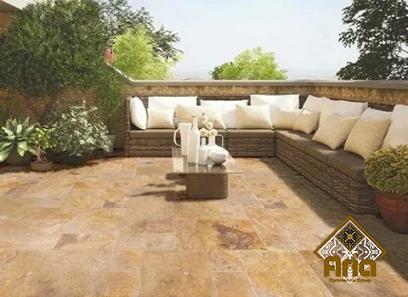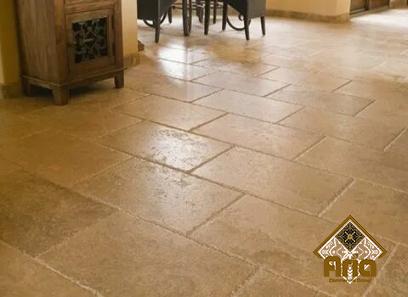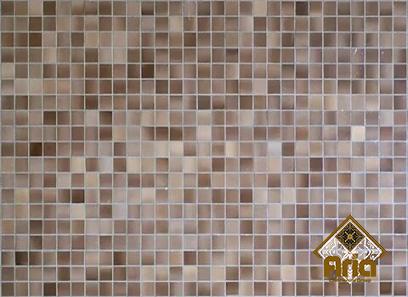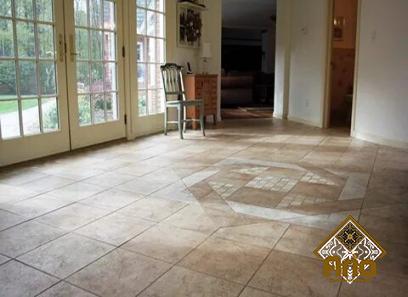Even though stone effect floors for the kitchen constructed from raw materials are still quite popular, the demand for porcelain tiles that are meant to seem like the stone has soared in recent years.
The versatility of these tiles makes them suitable for use in both commercial and residential settings. You can find a large selection of porcelain tiles that have the look of stone. Because of their adaptability, these tiles are suitable for use in either a contemporary or a historic environment.
In the past, natural effects were not quite as realistic as they are today, which made choosing a decision very easy. Their plethora of repetitive patterns and shiny plastic shine gave them the illusion of being artificially made.
On the other hand, contemporary stone appearance tiles are highly intricate, and an untrained eye may have difficulty discriminating between a real stone and a fake one.
One type of porcelain imitates the appearance of stone and marble, but there are other porcelains that imitate the appearance of other materials, such as metal, wood, cement, and concrete.

If you want the beauty of hardwood but want to place it over radiant heating, porcelain is a fantastic choice for you. Similarly, if you want the durability of concrete but don’t have the space for the real thing, porcelain is a terrific alternative for you.
Because of their low profile, these tiles may be installed directly over radiant heating systems without diminishing the amount of floor surface that is accessible.
In addition, they are thin and lightweight enough to be used as wall tiles in situations where the weight or thickness of typical stone tiles would make their installation dangerous. This allows them to be used in places where traditional stone tiles would not be suitable.
The structure of porcelain gives it a high level of strength, making it very difficult to break in any way. The minerals that are utilized to manufacture tiles are burned at high temperatures throughout the manufacturing process. The lifespan of the tiles after installation is insured by doing so in this manner.
The minerals that are utilized in the production of porcelain tiles offer these tiles a strong resistance to shattering.
Porcelain does not let much of either color change or water in, in contrast to genuine stone tiles, which may rapidly absorb water and change color.

Because porcelain is resistant to moisture, it is not only beneficial indoors, but it may also be used as a material in outdoor settings.
Because they have a low rate of absorption, the tiles are an excellent choice for use in moist settings such as bathrooms and kitchens.
Because of this, cleaning away stains and messes that are created by spills and drips is much simpler to do on these floors than it is on floors made of organic wood or natural stone.
The majority of messes that are made on porcelain tiles may be cleaned up with a damp cloth or a mop and bucket, however, this does depend on the degree of the mess.
Even the most stubborn stains can be removed in a short amount of time with the right tools and materials for cleaning, so there is no need for you to be concerned about irreparably damaging your floors and walls.
As a result of the material’s adaptability, porcelain may be utilized in a broad number of contexts. Due to the absence of grout lines, large shapes work well both on the floor and on the wall. Grout lines would normally interrupt the visual flow and make the forms less appealing.

Due to the fact that they are resistant to the elements, they are an excellent choice for an effortless installation in outdoor spaces such as patios, decks, and even kitchens and living rooms.
If you are thinking of tiling a room or changing the tiles in an existing room, you may be pondering which style or sort of tile to use.
Subway tiles, also known as metro tiles, are an excellent alternative to consider installing in either a more traditional or more contemporary kitchen or bathroom.
Despite the fact that tiles depicting wood or stone may provide a lovely, understated background for any kind of decoration, Stone impact tiles are among the best options available when looking for a tile to use.
Tiles with a stone effect are created to successfully imitate the look of genuine stone. This may be accomplished by using tiles that have been manufactured to seem like limestone or granite.
Whether it be the kitchen, the bathroom, the hallway, the living room, or the conservatory, a floor that is covered with stone tiles is an eye-catching feature that can be found in any location.
As a result of its durability as well as its resistance to staining and fading, porcelain is the material of choice for the majority of stone-look tiles.

This is preferable to utilizing actual stone tiles, which have a higher risk of cracking and fracturing than this alternative does.
Stone-look tiles are designed to be water- and stain-resistant during the manufacturing process. As a consequence of this, they will not need nearly as much maintenance as tiles made of actual stone.
An appealing alternative to genuine stone is a ceramic tile that has been created to look like it was made of stone. You read it correctly; you may now tile space in a way that is not only practical but also aesthetically pleasing.
Before this discovery, porcelain tiles were not suitable for use in locations that experienced cooler temperatures because of the risk of cracking and fracturing.
However, recent advancements in the manufacturing of porcelain tiles have made them resistant to frost and more durable.
Because they are nonporous, long-lasting, and need little upkeep, they are ideally suited for use in outdoor settings.
The use of porcelain tiles that have the appearance of genuine stone and are built for external usage makes the transition from indoor to outdoor spaces as smooth as possible, such as when going from a kitchen or living room out onto a patio.











Your comment submitted.